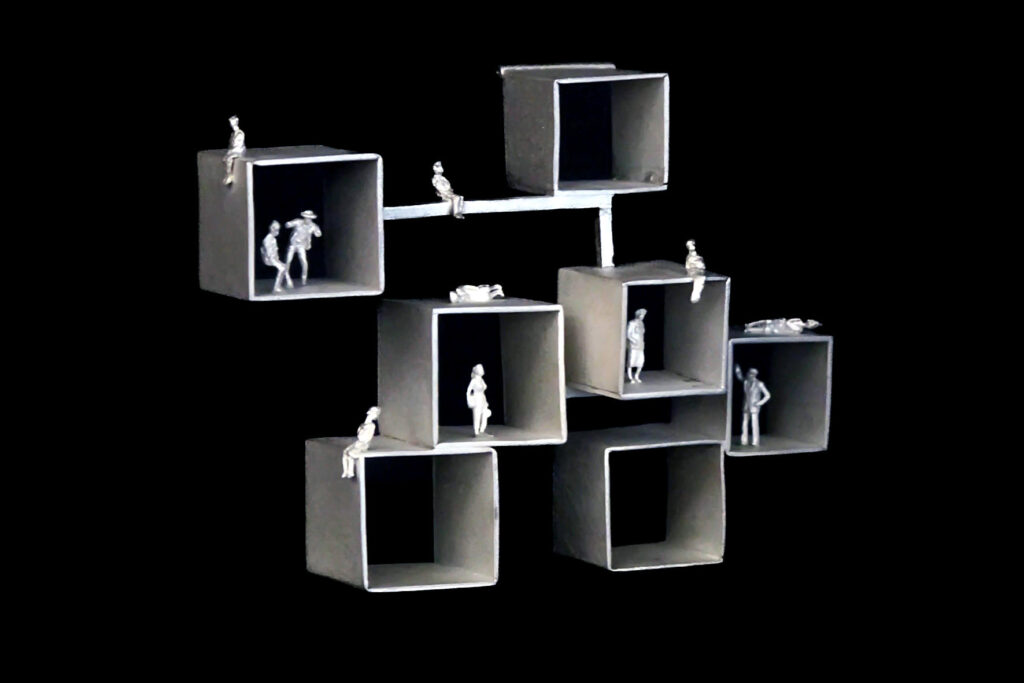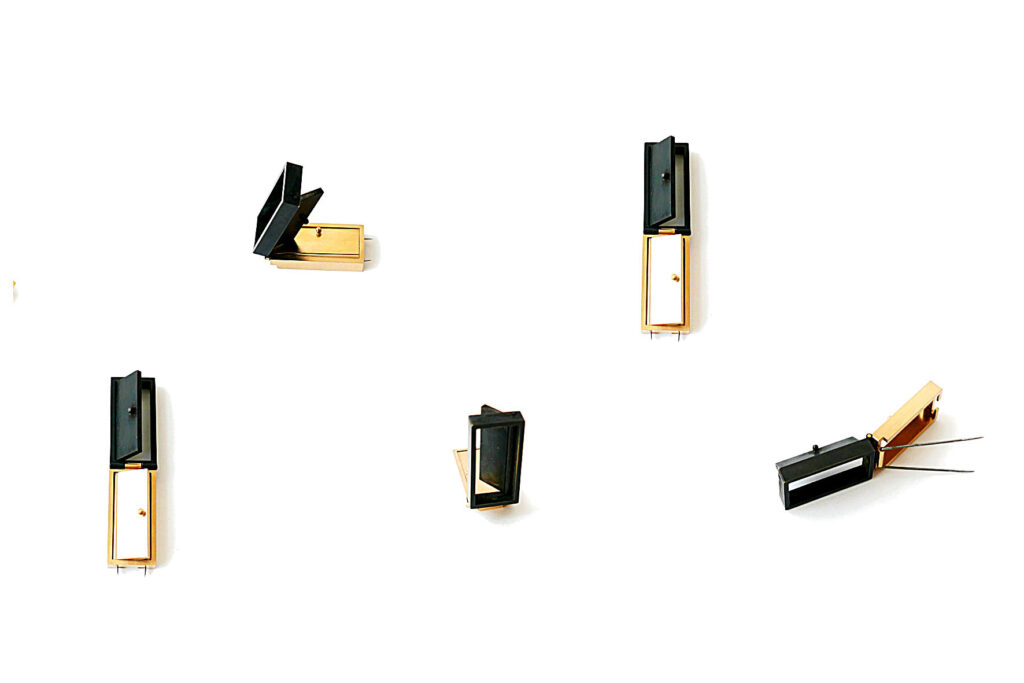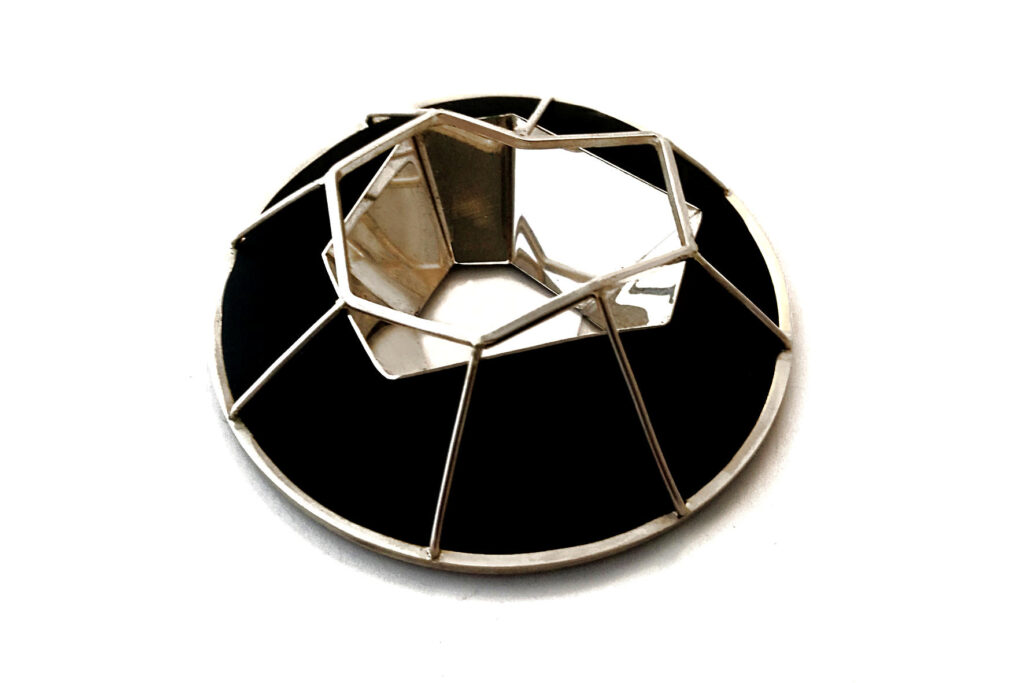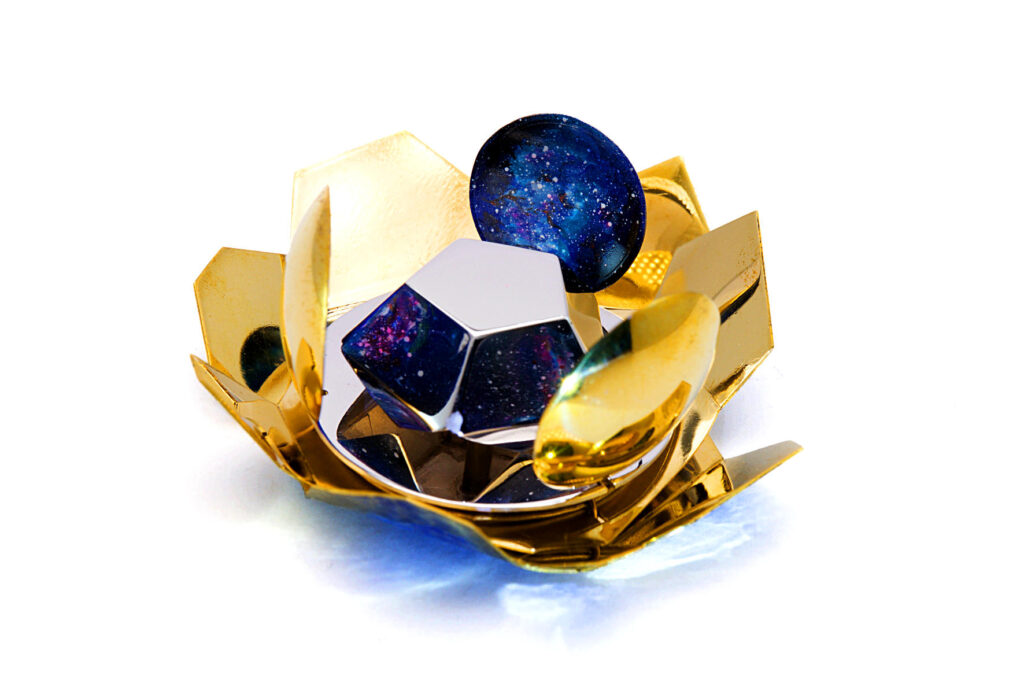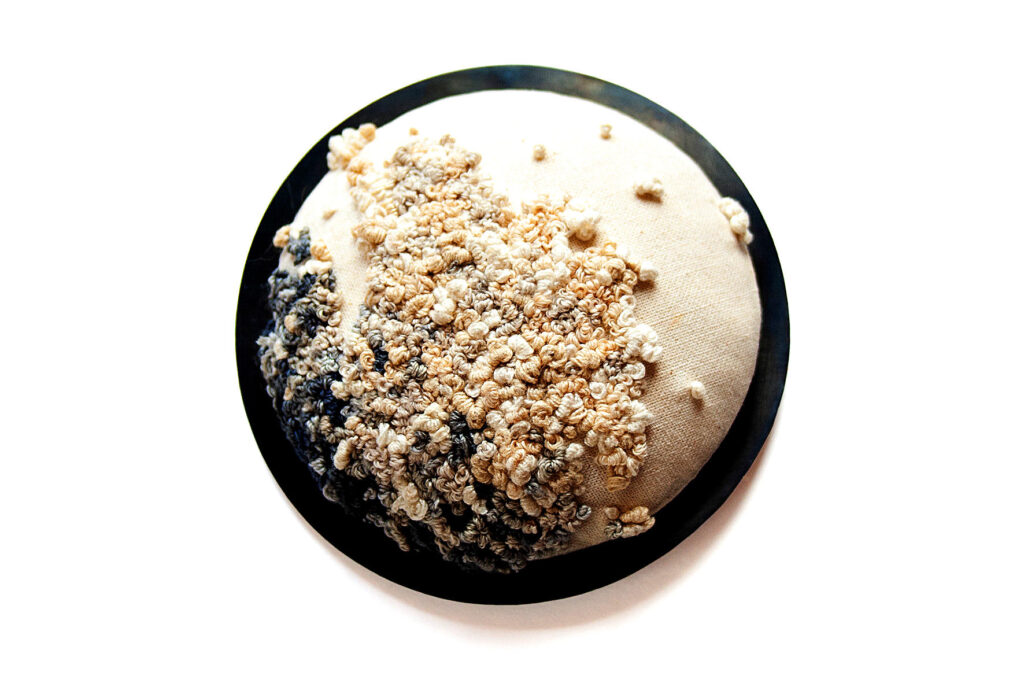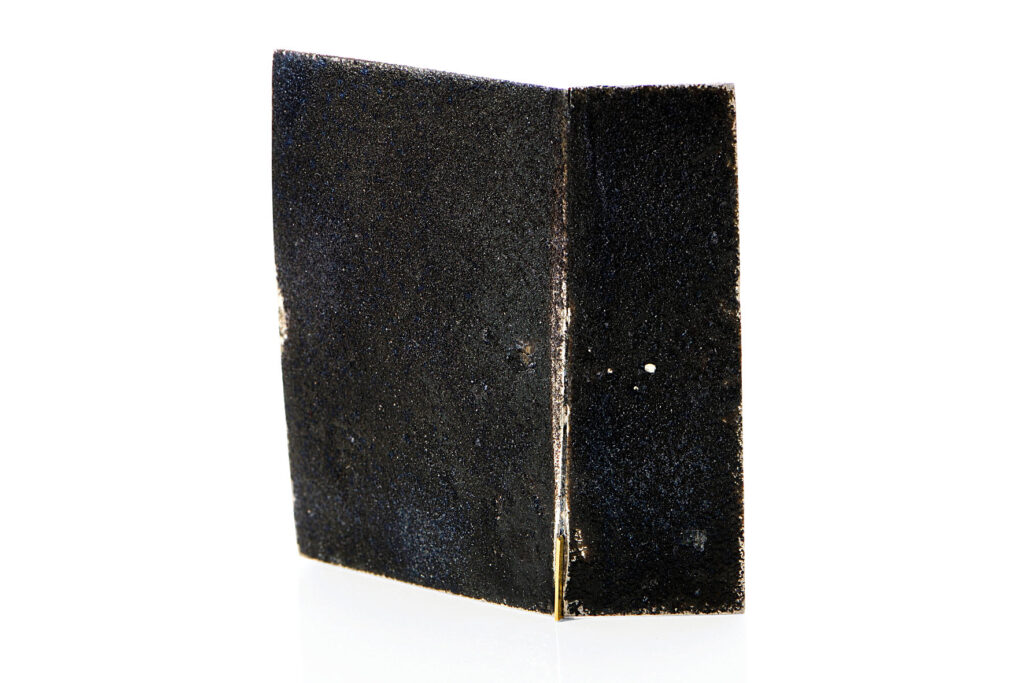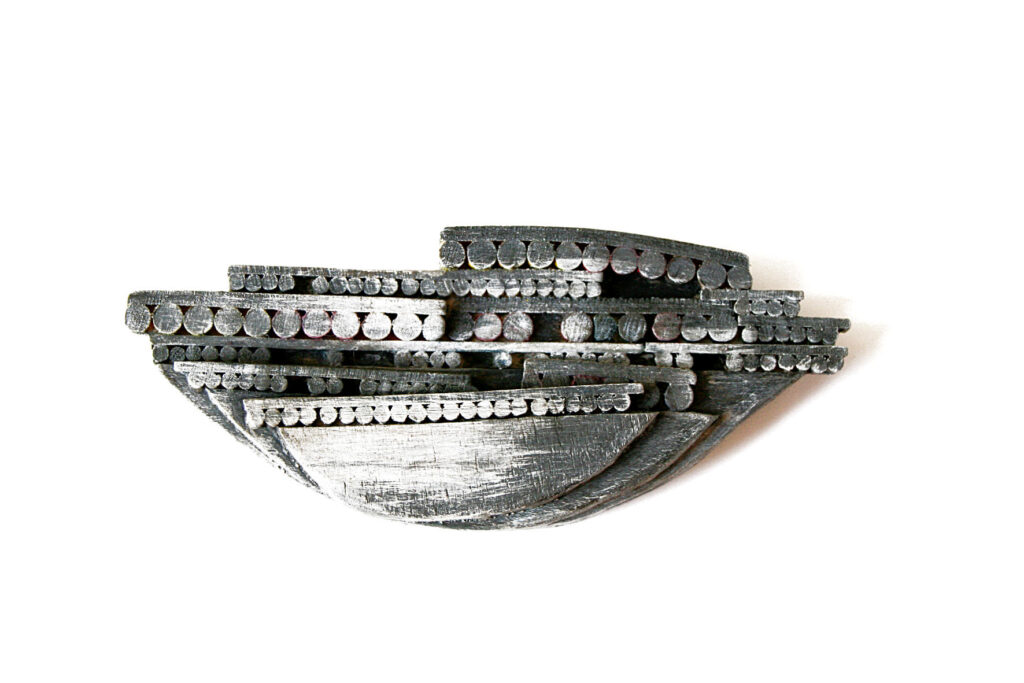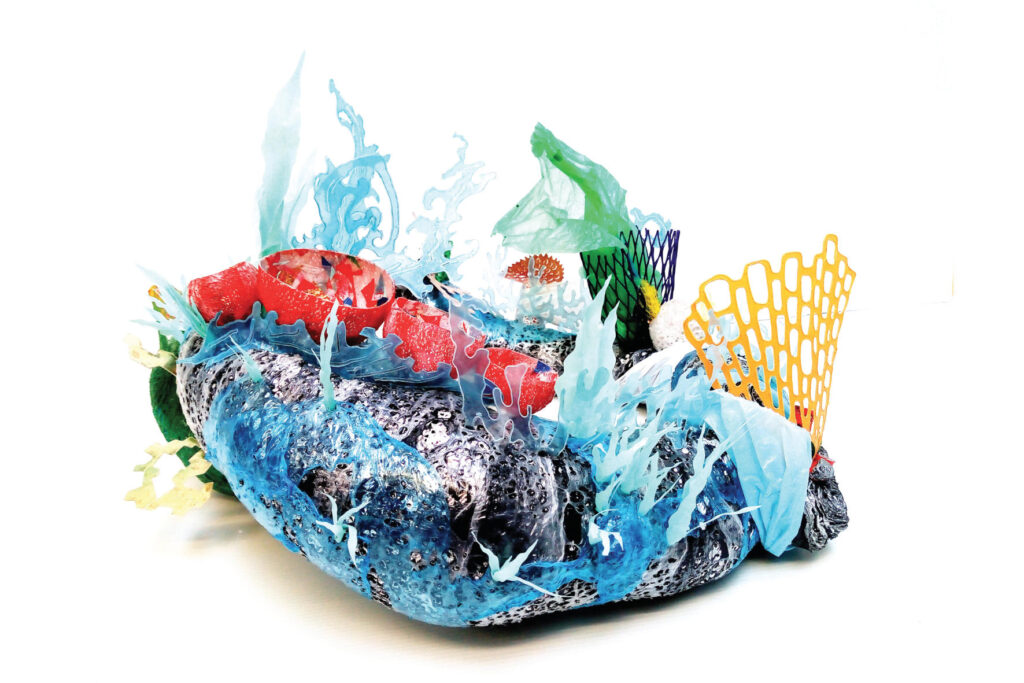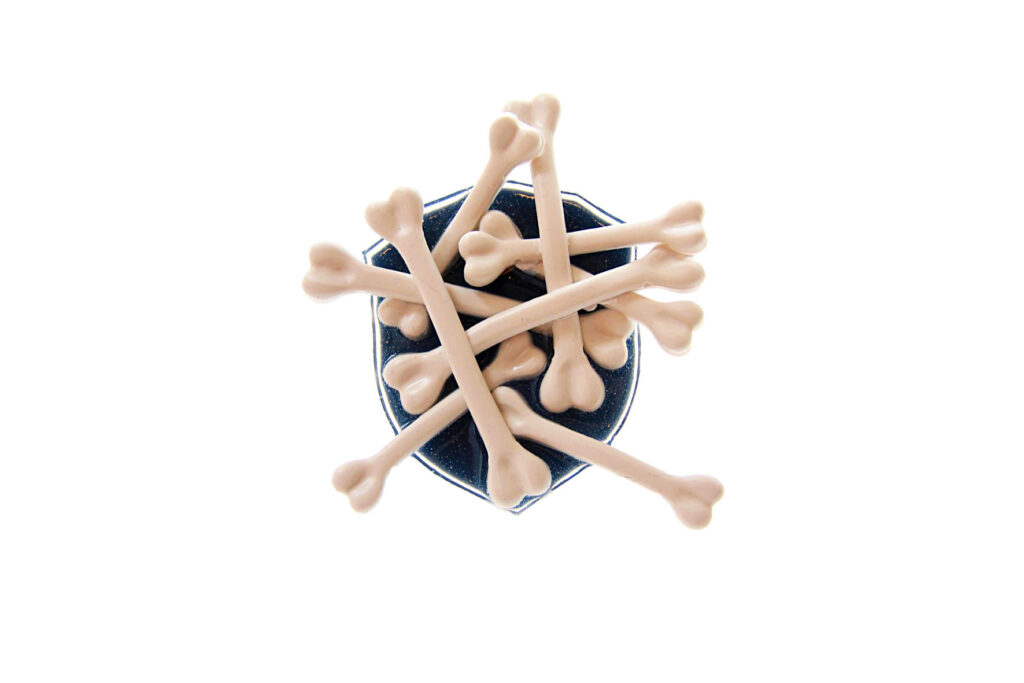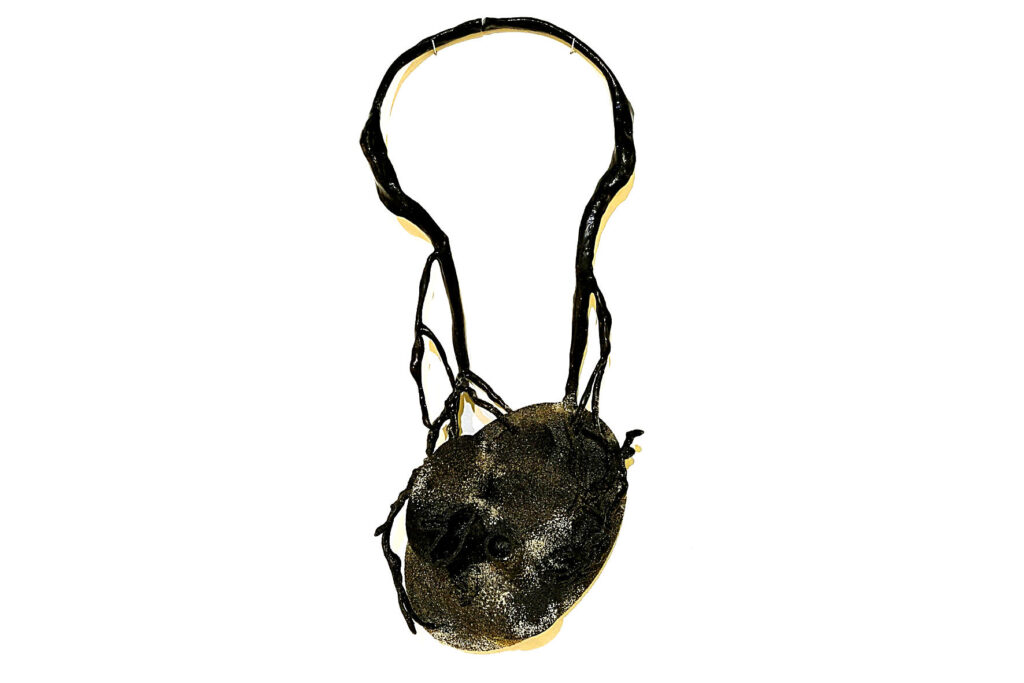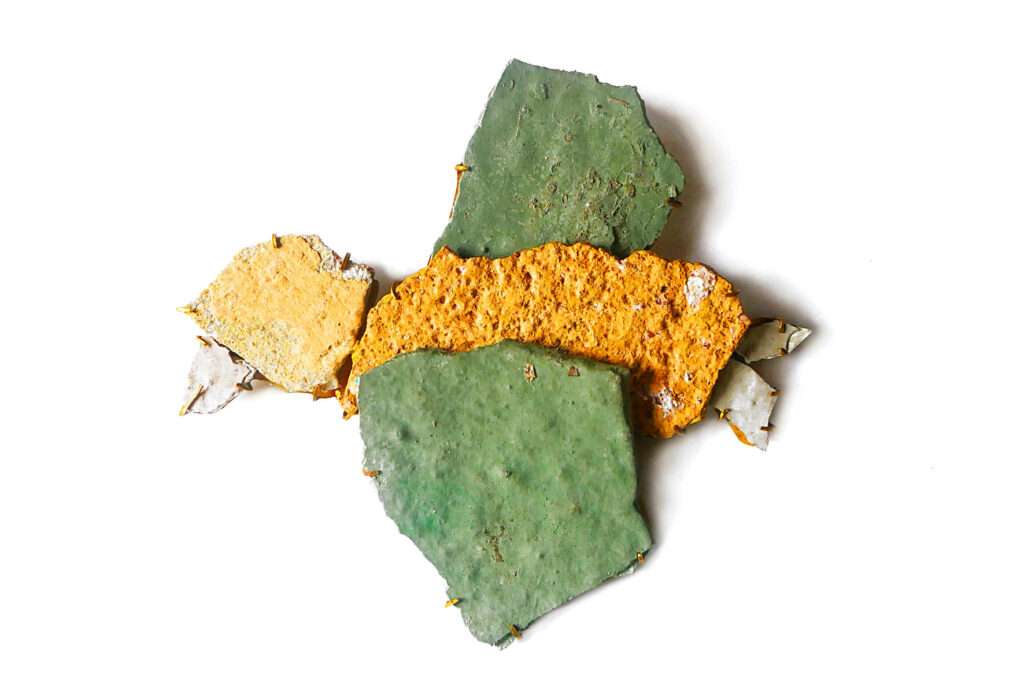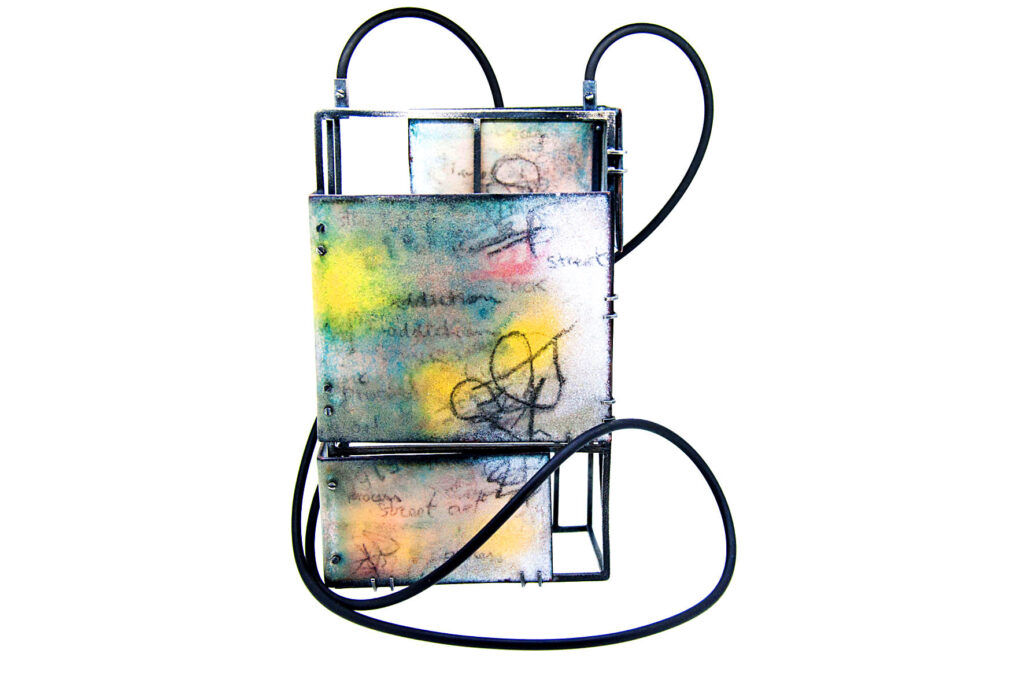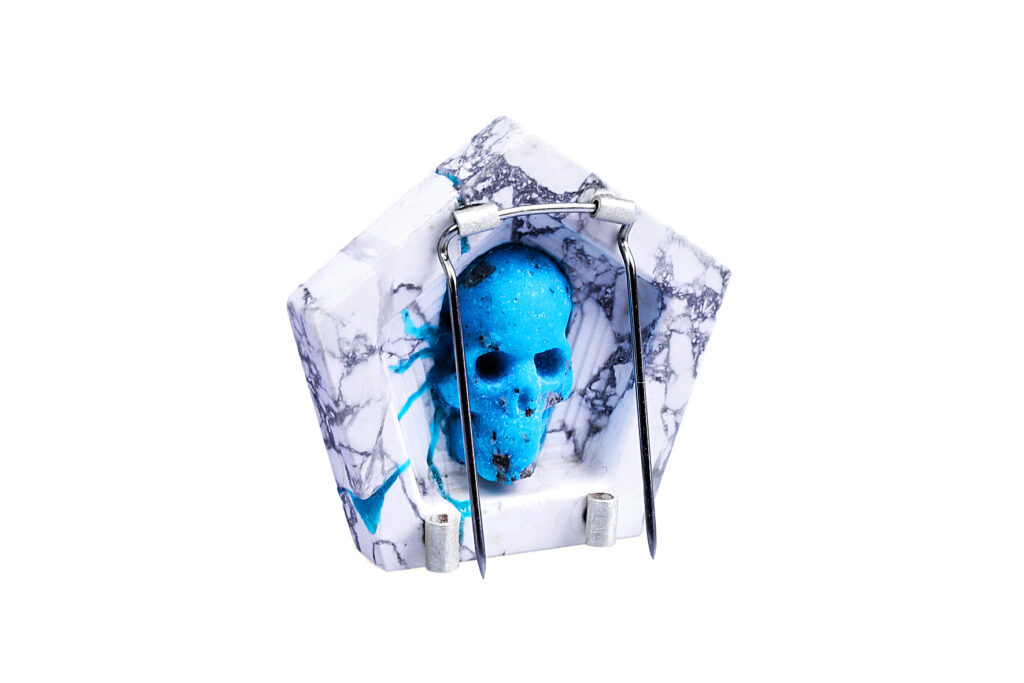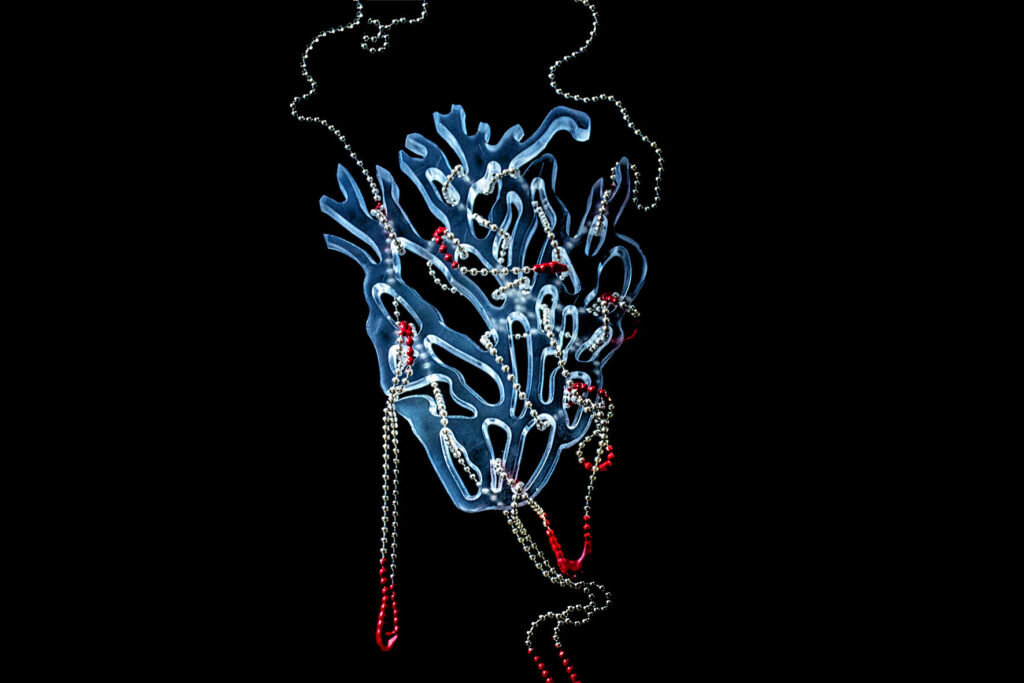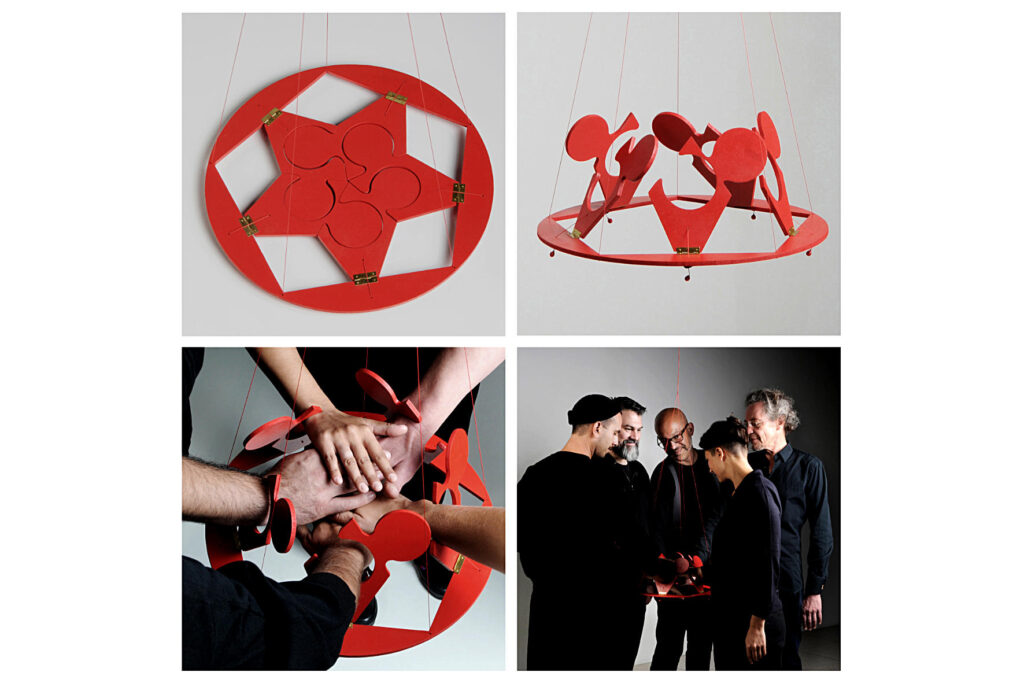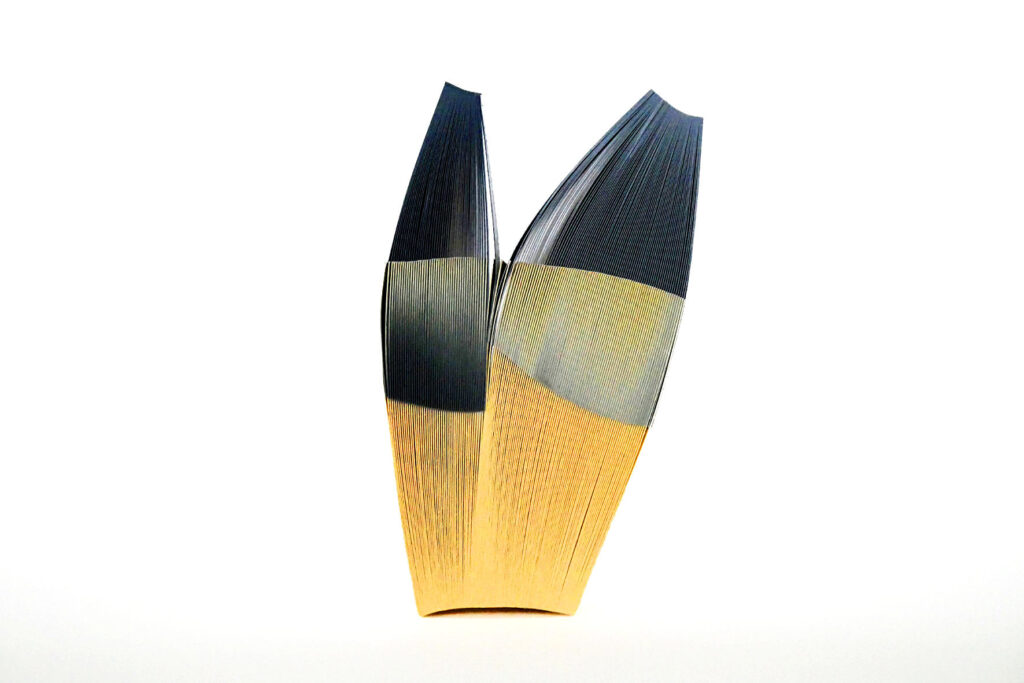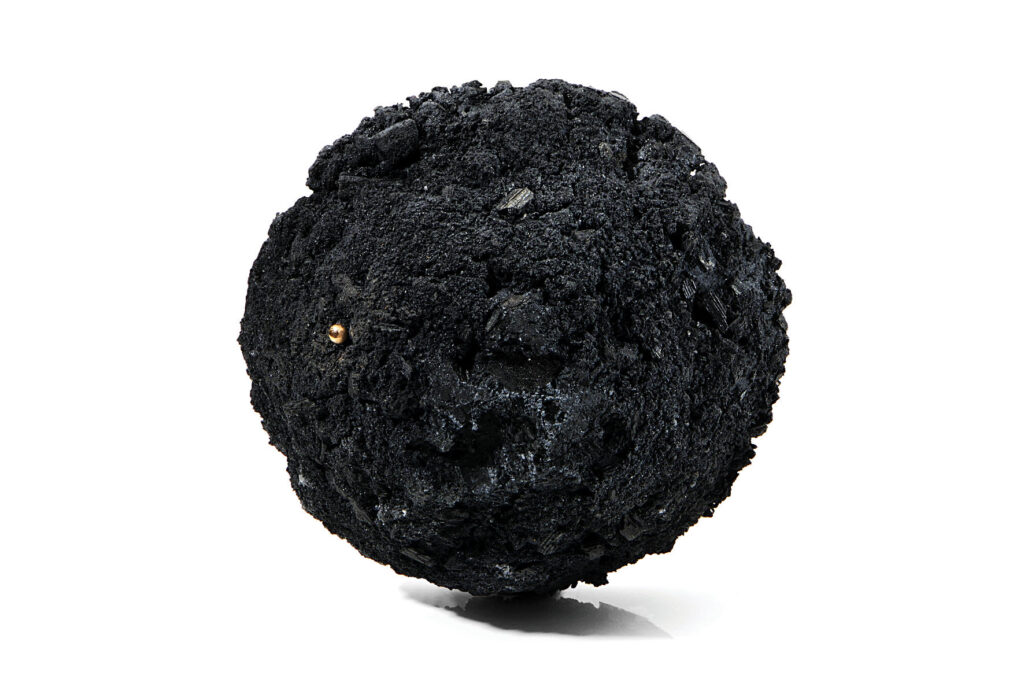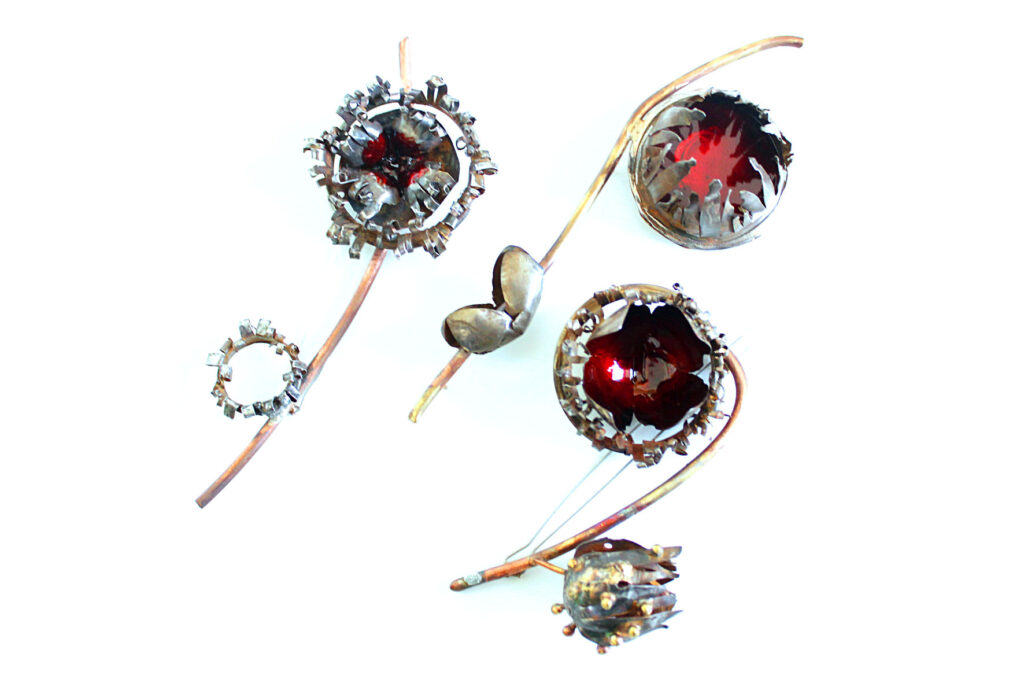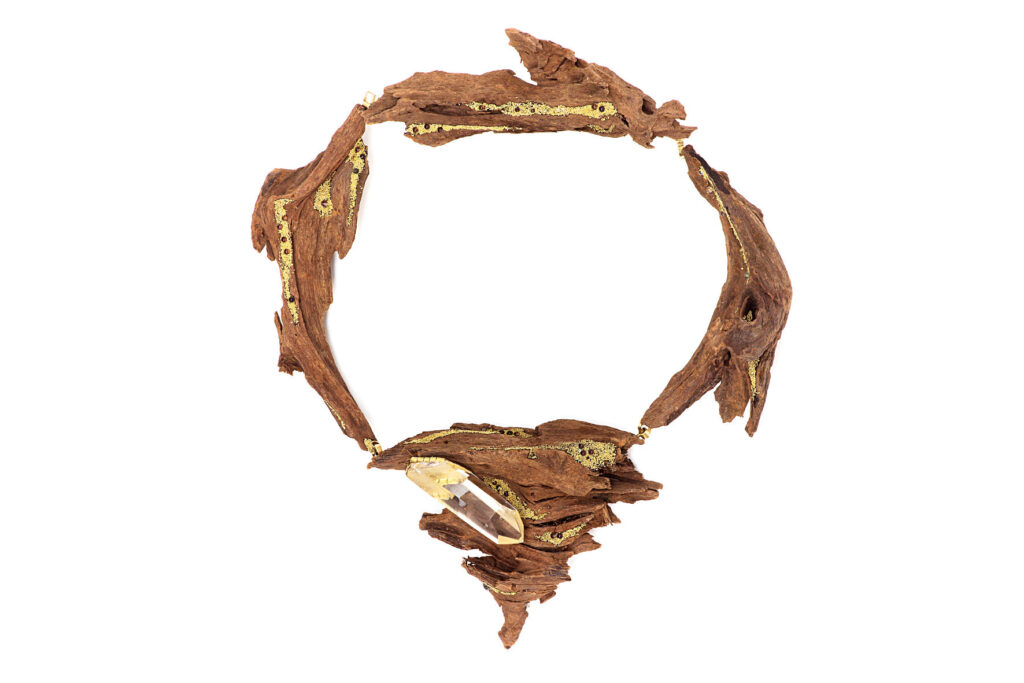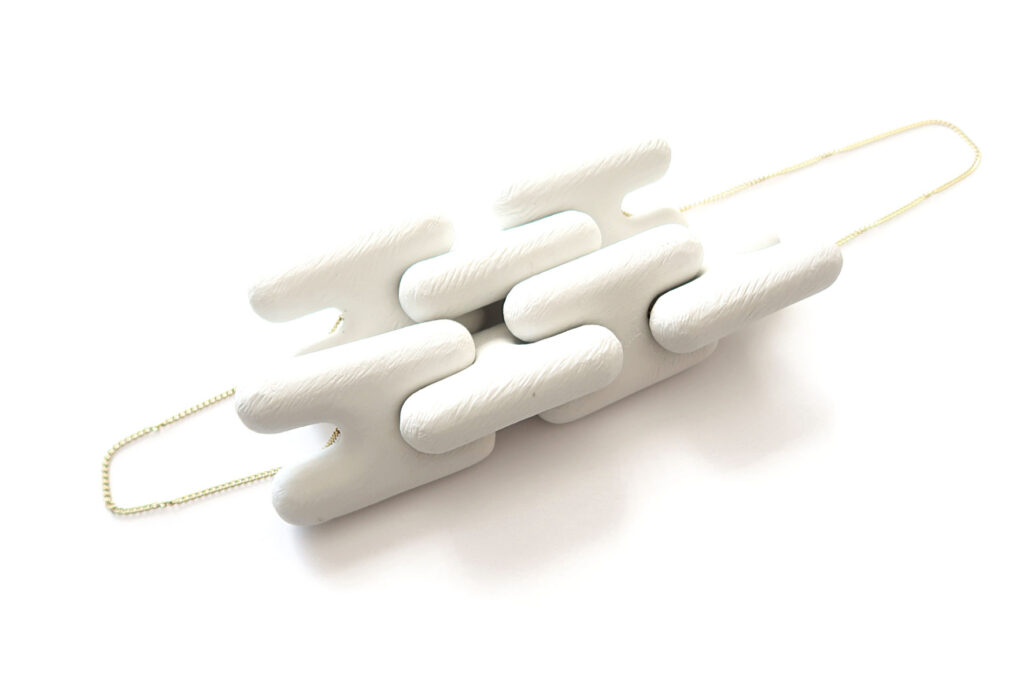Lié.e.s
The exhibition “Lié.e.s” (Linked) organized by Sébastien Carré, asked the participating artists to get inspired by important moments of the world’s’ history or the greatest achievements of humanity during times of despairs, some of them linked to the city of Strasbourg. I believe that this theme couldn’t have been better developed by authors of an applied art form other than contemporary jewelry. Because this, I believe, is the role of the contemporary art or author jewelry as well described by the internationally acclaimed Spanish jewelry artist and former teacher at The Massana Jewelry School Ramon Puig Cuyas:
“If in the remote origins of jewelry, the amulet and the talisman wanted to connect man with nature and the transcendent universe through the forces of magic, today jewelry pretends to do it through a new humanism that should integrate art and science values. Jewelry that must help to experiment new ways of thinking and living both to the creator and to the bearer. This should be the function that really conditioned the creation of the contemporary jewel.”
Jewelry is present in space and time since the very begging of the world we live in. From the earliest human societies to the modern world, jewelry is linked to the human body as part of the personal adornment and as such -to my opinion- can’t exist without the body.
“….Its role is not merely decorative, and it can hardly be completely conceptual, but it’s meaning is in the remarkable statement on the body -an effect that is enhanced by the personality of the wearer” writes Liesbeth den Besten in her book “ON JEWELLERY. A COMPENDIUM of international contemporary art jewellery” p. 31-32 (Arnoldsche Art Publishers)
And as the human body is part of the mother nature, the supply chain, the cosmos that surrounds us, jewelry itself is linked through the human body to cosmos as well.
My dear friend Dr. Eleni Konstantinidi-Syvridi, archaeologist of the National Archaeological Museum (NAM) of Athens Greece, explains what links jewelry to cosmos:
“In ancient Greek, the verb kosmó (κοσμώ) means to adorn and from it derives the Greek word for jewel kosmima (κόσμημα), meaning every item used for adornment and beautification. Pythagoras of Samos (586-490 BC) is allegedly the first to call the world, the universe around the earth “cosmos,” as for him it is a jewel made of harmony, beauty, and order.
Indeed, nothing could be more appropriate, considering that the need to adorn oneself and enchant the others has accompanied humankind from the very beginning: flowers, fruits, shells, animal bones, and pebbles, must have been the very first jewels worn by both women and men. And they may initially have been worn for ritual purposes, but over time, they became an integral part of everyday life.
Today, jewels, destined to be worn either all the time or in certain occasions, usually offered by our loved ones, mark our most special moments in life: birth, graduation, marriage and anniversaries. More than mere decoration, they have come to express and symbolize our emotional world.”
And Peter Bauhuis on his part writes in his book “ABECEDARIUM, p.35, (Arnoldsche Art Publishers): “CHAIN-Wearing jewelry-wearing the world. In ancient Greece the world was a ‘cosmos’ and ‘cosmos’ meant simultaneously ‘order’ and ‘jewelry’. What could wearing jewelry then men to a Greek? In medieval Europe the world was a Great Chain of Being: an essential connectedness of things through an axiological gradient leading up towards God. (…) Assuming we saw the world as a great chain of ‘beings’ would our wearing necklaces, bracelets, anklets, appear to us as if we were wearing the world? “
Personally, analyzing a bit further what has been already said, I would add that jewelry is one of the links of the long social, economic, political, artistic and cultural chain and it helps us understand the world around us. Jewelry is cross-cultural and universal. And though is non-verbal communication, it has a symbolic language ( On its own ?) of each own, common to all people worldwide, that once decoded can give us valuable information about the ritual activities, the socioeconomic status, the identity, the age, the gender, even the sexual life of the wearer in a specific era.
And I very much agree with Elyse Zorn Karlin’s opinion (Journalist, Jewelry Historian and Freelance curator) as expressed in an interview of hers back in 2013, on Space.com entitled “Twinkle, Twinkle Little Sapphire: Space-Inspired Jewelry Sparkles in Exhibit” in which she talks about the exhibition “Out of this World! Jewelry in the Space Age” that she had then curated:
“Studying jewelry is like a window into a time period. Jewelry is not made in a vacuum. It comes from somewhere. If there’s something going on in terms of political events, current events, if there’s a war, all those things can be seen in jewelry. It’s a much more fun way to study history.”
Current affairs and human achievements have always inspired jewelry artists of all eras. For example, the internationally acclaimed Greek jeweler Ilias Lalaounis was inspired in the 1970s by NASA’s missions to space and moon and created his amazing Motion in Space series of jewelry that one can admire at the permanent collection of the Ilias Lalounis Jewelry Museum in Athens (GR).
And he wasn’t the only one. The previously mentioned futuristic exhibition, “Out of this World! Jewelry in the Space Age” that was on view at The Forbes Galleries in New York City (16/03-07/09/2013) and at the Carnegie Museum of Natural History in Pittsburgh (27/06/ 2015-04/01/2016), both in U.S, showcased more than 100 exhibits that explored the subject of our universe, “how space has captured the imagination of man as represented in jewelry from ancient times to today and proved the many ways that jewelry and space are connected in our cultural heritage”. (excerpt from the exhibition’s catalogue)
The big wars in history that changed the world are related to jewelry as well. I will mention here first the Berlin Iron or Fer de Berlin jewelry of the early 19th century (1813-1815). This jewelry that often bore slogans like ‘Gold gab ich für Eisen’ (I gave gold for iron) or ‘Für das Wohl des Vaterlands’ (For the welfare of our homeland), were made when the Prussians, mainly the upper classes, urged by the Prussian royal family in order to finance the war against Napoleon, turned in their gold jewelry in an exchange of iron ones that they used to wear as a symbol of their patriotic act.
Another great example of public memorial jewelry worth mentioning, is “the red poppy badge worn in the weeks preceding Armistice Day (11 November) in the Anglo-Saxon World as a symbol of remembrance in the UK and the US” of the war dead and the end of World War I.
“The red poppy has become the most familiar symbol of remembrance in Commonwealth countries. (…). The red poppy is a rear example of a wearable symbol that unites people all around the world.” (Liesbeth den Besten, On JEWELLERY, p. 13)
And there is more to mention, for example the sweetheart jewelry, that were exchanged as mementos by the U.S soldiers and their families or their loved ones during the World Wars I and II to kept connected with home; or the luminous arm-bands and pin-on brooches, buttons or flowers, worn during the blackouts in London on World War II.
If I were a jewelry artist myself, I would have been inspired by an event that happened to my country just before the invasion of the Nazi’s in Athens in the Second World War. The then director of the museum Christos Karouzos and his wife the archaeologist Semni Karouzou, gathered together archaeologists, curators, restorers, tourist guides and employees of the NAM alongside volunteer citizens and workers to save the antiquities and the gold treasures of Greek culture. For six months they worked restlessly from dawn till midnight and sometimes all night long and the finally achieved to box and bury in the basements of the Museums and elsewhere all the artifacts of the museum’s collections. These actions have led to the effective protection and preservation of antiquities from disasters and erosion during the period of Occupation of Greece (1941-1945) by the German troops.
And the piece of jewelry that I would create myself would be a necklace formed by a decorative symbol like an X with a horizontal and a vertical line in the middle that I have seen in some photos of the museum dated back in 1941 and hands holding a kouros hanged by a chain in the center of the piece.
Furthermore, jewelry links human beings between them in several ways. It links the maker, to the gallerist, to the collector, to the buyer who offers the piece to a beloved one, to the wearer. On his surface it holds the traces of the hands, the feelings, the emotions, the thoughts, the memories of all these persons. Also, it links the maker to those who will admire the jewelry and will express their good words to the wearer and indirectly to the maker as well. In that way, an endless human chain is being formed thanks to jewelry that could wrap around the Earth.
On my part jewelry linked me through my JEWELRYbox magazine to beautiful and kind people around the world. I am very happy that some of them became dear friends to me. I have friends now not only from Greece but also from Turkey, Israel, Italy, Spain, France, Germany, South Korea, China, Latvia, Great Britain, US…Even if I don’t speak their languages and they don’t speak mine, or some of them don’t even speak English at all, we manage to communicate because we all speak the language of jewelry. This made me realize that jewelry has no borders; that it is a multicultural world open to everyone.
Artists from countries all over the continent gather together to show their works in Munich, in Amsterdam, in Barcelona, in Athens, in Milan, in Valencia, in New York, during jewelry weeks, fairs and shows, in galleries and museums. One next to the other, or in collaboration with each other in a creative environment, they participate in the same projects bringing their art to the public in a friendly and peaceful mood, regardless of their political or religious beliefs, the color of their skin or their gender.
The exhibition “Lié.e.s” is a great example of a group exhibition that linked together 40 artists from 18 countries and different cultures: Spain, Columbia, France, Germany, Netherlands, USA, Belgium, Canada, Israel, United Kingdom, Italy, South Korea, Iran, Australia, Norway, Austria, Slovakia, Finland.
In this exhibition, divided into 6 (or7), topics, the visitors will have the opportunity to admire 94 works of art and to discover not only the important historical events or great human achievements that inspired the participants but also the excellence of their meticulously crafted works.
Marietta Kontogianni, Journalist
Curator: Sébastien Carré
Artist List: Sharareh Aghaei (DE/IRN) | Lavian Ariel (ISR) | Isabelle Azais (BE/FR) | Sara Barbanti (IT) Laurent Brune (DE/FR) | Isabelle Busnel (UK/FR) Gemma Canal (ES) | Sébastien Carré (FR) | Marine Chevanse (FR) | Scarpitti Chiara (IT) | Ana Escobar (FR/CO) | Alexandra Estarlich Gomez (ES) | Maria Rosa Franzin (IT) | Holland Houdek (USA) | Augustin Jans (FR) | Vicky Kanellopoulos (NOR/AUS) | Lodie Kardouss (BE/FR) | Eva Van Kempen (NL) | Mia Kwon (DE/KOR) | Emilie Le Dez (DE/FR) | Ria Lins (BE) | Gigi Mariani (IT) | Marie Masson (FR) | Juliette Même (FR) |Viktoria Muenzker (AUT/SK) | Wiebke Pandikow (FIN/DE) | Kim Paquet (CA) | Louise Perrone (CA/UK) | Andrea Pineros (FR/CO) | Cannelle Preira (FR) | Christian Quiceno (CO) | Delphine R2M (FR) | Juan Riusech (FR/ES) | Stefano Rossi (IT) | Linda Savineau (BE) | Nicole Schuster (DE) | Sílvia Serra (ES) | Sara Shahak (ISR) | Magali Thibault Gobeil (CA) | Isabel Tristan (ES) | Yiumsiri Vantanapindu (FR/TH)
Participation: Marietta Kontogianni
https://www.facebook.com/LIEES.expo/
LIE.E.S video:
https://vimeo.com/344799231
Lodie kardouss video
https://vimeo.com/413629118
password: ajewelrypiece
